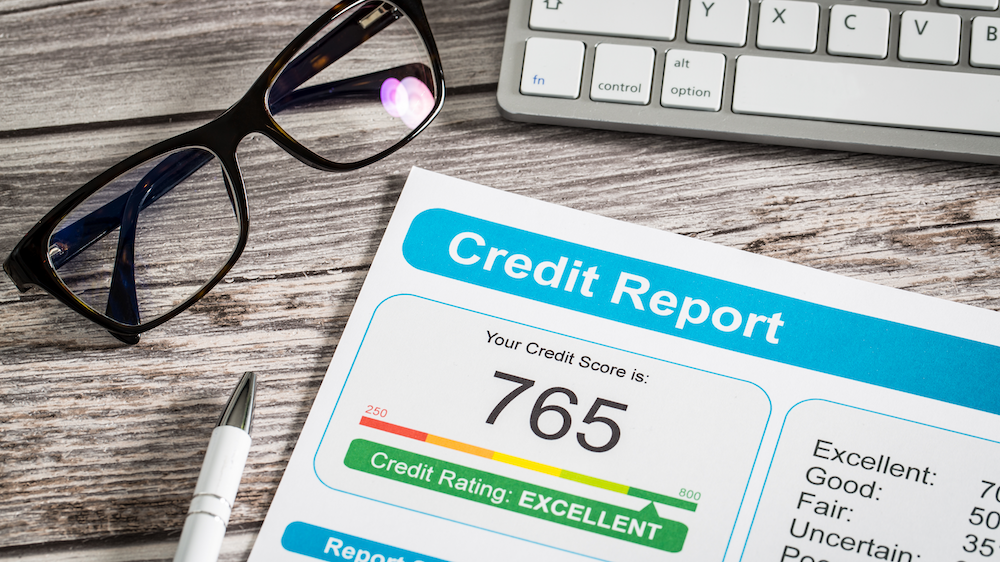
What Is A Conventional Loan? Financing Your New Home

The home-buying process is often rich in jargon and complex terms. If you've been shopping around for a mortgage, you're more than likely to have encountered the term "conventional loan" at least once and you’ve probably wondered “Exactly what is a conventional loan?”
A conventional loan or conventional mortgage loan is a home buyer's loan that isn't government-backed, nor does it adhere to government standards. It may be available through a private lender or under the Fannie Mae and Freddie Mac enterprises.
In this guide, we'll outline the different types of conventional loans, how to qualify for one, and whether or not it'll best suit your needs.
Types Of Conventional Loans
Other than its reputation for being a safe home-buying option, conventional loans come in many forms and varieties that include the following.
Conforming vs Non-Conforming Conventional Loans
A conforming conventional loan is one that meets the loan standards allocated by the government-sponsored Fannie Mae and Freddie Mac enterprises and is under the maximum loan amount set by the Federal Housing Finance Agency. In most parts of the U.S., you can borrow a loan amount of up to $510,400 and reap the benefits of more advantageous rates. Baseline loan limits change every year under conforming loans according to housing price changes.
If your desired loan doesn't follow the same underwriting standards are those imposed by Fannie Mae and Freddie MAC and exceed FHFA limits, it is most likely a non-conforming conventional loan. Prospective homeowners might opt to take out a non-conforming conventional loan as opposed to a conforming one if they want to explore more types of property and larger borrowing limits.
Fixed-Rate vs Adjustable-Rate Conventional Loans
Whether pursuing conforming loans or non-conforming loans, you'll be required to pay interest on your mortgage. Borrowers of fixed-rate conventional loans will repay an expected rate for the life of the loan. Also known as amortization, lenders charge borrowers a steady payment with decreasing interest and increasing principal. A fixed interest rate makes it easier for borrowers to budget according to an unchanging fee that they can prepare for well in advance.
On the other hand, adjustable-rate conventional loans are more suitable for borrowers who believe they can confidently repay their loans within 10 years or less. Nonetheless, this type of loan may be subject to an interest rate that fluctuates depending on how the market rises and falls. As such, they can sometimes be unpredictable and difficult to manage. That being said, an adjustable-rate conventional mortgage is fixed – initially – over a period of 3, 5, or 7 years. During this time, lenders charge extra-low interest, giving borrowers an opportunity to save thousands over time.
Is A Conventional Loan For You?
If you've outgrown your rental home and want to purchase one that is exclusively yours, you may want to start looking into a conventional loan. That being said, it isn't for everyone; ideal candidates for conventional loans will have:
A Stellar Credit Report
Lenders offering conventional mortgage loans will prioritize borrowers who have an attractive credit score. To qualify, you'll need a credit score of at least 680 but should preferably boast one over 700. Higher credit scores usually result in lower interest rates, with the ideal terms lying at a credit score of 740.
A conventional loan may not be for you if: You have a credit score below 650.
A Low Debt-To-Income Ratio
The sum of your monthly debts from credit cards and loan payments up against your monthly income, a qualifying debt-to-income ratio lies at around 36% and no more than 43%. In layman's terms, you should always aim to spend less than 36% of your monthly income on other existing debts.
A conventional loan may not be for you if: Your debt-to-income ratio is above 43% and you have no proof of regular employment.
Hefty Down Payment Savings
Though you can choose to put down as little as 3% on your down payment for a conventional loan under Fannie Mae and Freddie Mac standards, you'll want to prepare for at least 10%. If you make a down payment of less than 20%, a lender may require that you take out a private mortgage insurance (PMI). As such, you'll have to pay its premiums until you successfully achieve at least 20% equity on the desired home.
A conventional loan may not be for you if: You don't have a lot of savings and can't afford a down payment of at least 10%.

Choosing Between Conventional Loans And Government-Backed Loans
Ideally, the best way to purchase a new home is to settle the entire price in cash. However, this isn't usually the case. In fact, most first-time homebuyers struggle to save up enough cash for a down payment, which is when they begin to consider government loans. Though conventional and government loans are similar in that they are issued by banks and approved private lenders, they do come with their differences.
When You Should Consider A Conventional Loan
- Your financial situation is ideal: You have an excellent credit score, a low debt-to-income ratio, and can afford to make a large down payment.
- You want to process a loan quickly: Because they rely primarily on your financial background, conventional loans are quick to process once you've provided the appropriate documents to your lender.
- You prefer flexible terms: How long you decide to commit to paying back a loan can range anywhere between 10 to 30 years. Not to mention, you can also decide how much you want to place on your down payment and whether you'd prefer a fixed interest rate or adjustable interest rate.
When You Should Consider A Government-Backed Loan
- You have a lower credit score: If you don't meet the terms of a conventional mortgage, you can qualify for an FHA (Federal Housing Administration) Loan with a credit score of as low as 500. Under this loan, you can place a down payment of just 3.5% of the home's purchase price.
- You're in the military community: If you're a previous or current member of the U.S. Armed Forces or National Guard, you can apply for a VA Loan with no down payment at all. Instead, you'll be expected to pay a one-time funding fee, which is anywhere between 1 - 3% of the total loan amount.
- You live in a rural area: Borrowers who are considered to make low-to-average income may qualify for a USDA Loan, which is especially popular among individuals from rural areas. Borrowers are permitted to take out this type of loan if they don't make more than 15% over the local median salary.
- You can't shoulder a large down payment: If you can't sustain the 20% down payment on a conventional loan, FHA loans are a go-to option for homebuyers with less cash.

The Advantages Of A Conventional Loan
Whether you're a first-time or repeat home-buyer, there are a handful of reasons conventional loans make for a popular choice.
Low-Interest Rates
If a borrower can prove above-average creditworthiness, lenders will be more than happy to authorize a much lower interest rate of down to less than 3%. If you're also paying premiums on a PMI, you can request for this process to be eliminated once you reach a loan-to-value ratio of 80%.
Flexible Loan Terms
As opposed to government-backed loans, private mortgage lenders can present borrowers with more flexible terms because they don't need to pay regard to government standards. They come in all shapes and sizes – from 10-year adjustable-rate loans or 15-year fixed-rate loans. The choice is up to you.
No Upfront Fees
While FHA loans may demand an upfront fee of between 1 to 4% of the total loan amount, conforming loans won't require anything beyond a monthly mortgage insurance fee. This is also only the case when a prospective owner submits a down payment of less than 20%.
The Disadvantages Of A Conventional Loan
Along with the benefits that come over a government loan, conventional loans also come with a downside.
You Need To Be Creditworthy
If you don't have a credit score of at least 620, you won't be eligible to take out a conventional loan. Even when you do, bad credit can put you at risk of a higher interest rate that you won't be able to afford down the line. If the loan you're pursuing provides a benefit to the government and the circumstances of your credit are only temporary, you might consider FHA loans instead.
Weighty Down Payment
Though FHA loans require a larger down payment of 3.5%, placing the minimum 3% down payment on a conventional loan may incur a higher interest rate for the life of the loan. Not to mention, your lender may ask that you pay premiums on private mortgage insurance on top of your monthly repayments.
Stringent Qualifying Guidelines
Because a conventional loan places more risk on lenders than it does on borrowers, it can be difficult to meet a particular agency's eligibility criteria. Even after submitting passable documents, you may not end up with the terms you were after.
Private Mortgage Insurance
If you can't afford a 20% down payment, you'll have to comply with a private mortgage insurance rate that is determined based on the down you place and your credit score. In some cases, lenders will choose a specific PMI company to work with – but you do have some say in the decision. If you know a conventional mortgage company that offers better PMI rates, you can recommend them to your lender.
Interest Rates On Conventional Loans
Below are the conventional loan interest rates reflected as of August 2020. These rates are prone to changing daily or even several times throughout the day.
| Type of Loan | Loan Period | Average Interest Rate |
| Conventional FRM | 30 years | 2.75% |
| Conventional FRM | 15 years | 2.625% |
| Conventional ARM | 5 years | 5% |

Pursuing A Conventional Loan
Applying for a conventional loan is a document-heavy process that requires you to clean up any reports that don't accurately reflect your credit, debts, income, and assets. Here's what you'll need to prepare.
Gather Your Documents
As previously mentioned, applying for a conventional loan will mean having to gather a plethora of documents that prove you can afford it in the first place. Come up with a system for organizing information such as bank statements, proof of income, your home's appraisal value, proof of homeowner's insurance, credit reports, and more. If you've previously filed for bankruptcy, foreclosure, or repossession, you may be asked to provide additional records of the incident – and it may hurt your chances of qualifying for the conventional mortgage you're after.
Verify Your Employment
To prove that you're receiving consistent income, you'll likely need to gather at least 2 years' worth of documentation that includes pay stubs, W-2s, and tax returns (if you're self-employed). In some cases, a lender may request to speak with your employer to verify your status as a regular employee. If you're earning other income peripherally, such as through investments, you'll also have to present this documentation to your lender.
Consider What Down Payment You Can Afford
Remember that while you don't need to drop a massive down payment, one that is at least 20% can eliminate the need to pay private mortgage insurance and secure lower interest rates. If your loan can afford to wait, consider pushing your deadlines back to save for a larger down payment amount.
Get Pre-Approved
As with any loan approval process, getting pre-approved before home shopping can help legitimize your offer to a lender once you decide to make one. A pre-approval often comes in the form of a letter that is valid for about 60 to 90 days. Within this period, be sure to keep your credit and assets in check, as a lender will still perform a financial analysis after accepting your pre-approval.
Work On Your Credit Score
If your credit ratings lie within the range of mid to upper-700s, you may qualify for more favorable terms on your desired loan. If your credit score isn't quite where you want it to be, you can improve your ratings by paying overdue bills, avoiding unnecessary purchases and borrowing, and fulfilling existing debts. Reviewing your credit report can help you pinpoint areas of improvement, which may take time to start demonstrating results.
Select Your Loan Terms
When it comes to the final step of shopping for a conventional mortgage lender and loan type that best suits your needs, don't settle for the first attractive option you see. If you've already gotten pre-approved with a particular lender, you don't have to stay married to their services. In fact, comparing terms and rates with multiple lenders can help you make a more informed decision regarding your overall budget and monthly payments you can truly afford.

Conclusion
By employing thoughtful shopping practices, you can take advantage of the best conventional mortgage options at lower mortgage insurance rates. As a rule of thumb, select between at least three lenders and determine your level of eligibility with each one.
Since they are still the most popular home financing option by a long shot, conventional loans exist in a highly competitive market and can often be difficult to qualify for. Even after shortlisting the best lenders in your area, you may not always book them. With that in mind, patience, and diligence are a must when undergoing the mortgage process.
If you’re still unsure, reach out to Wesley LLC to find a solution that satisfies your financial needs!